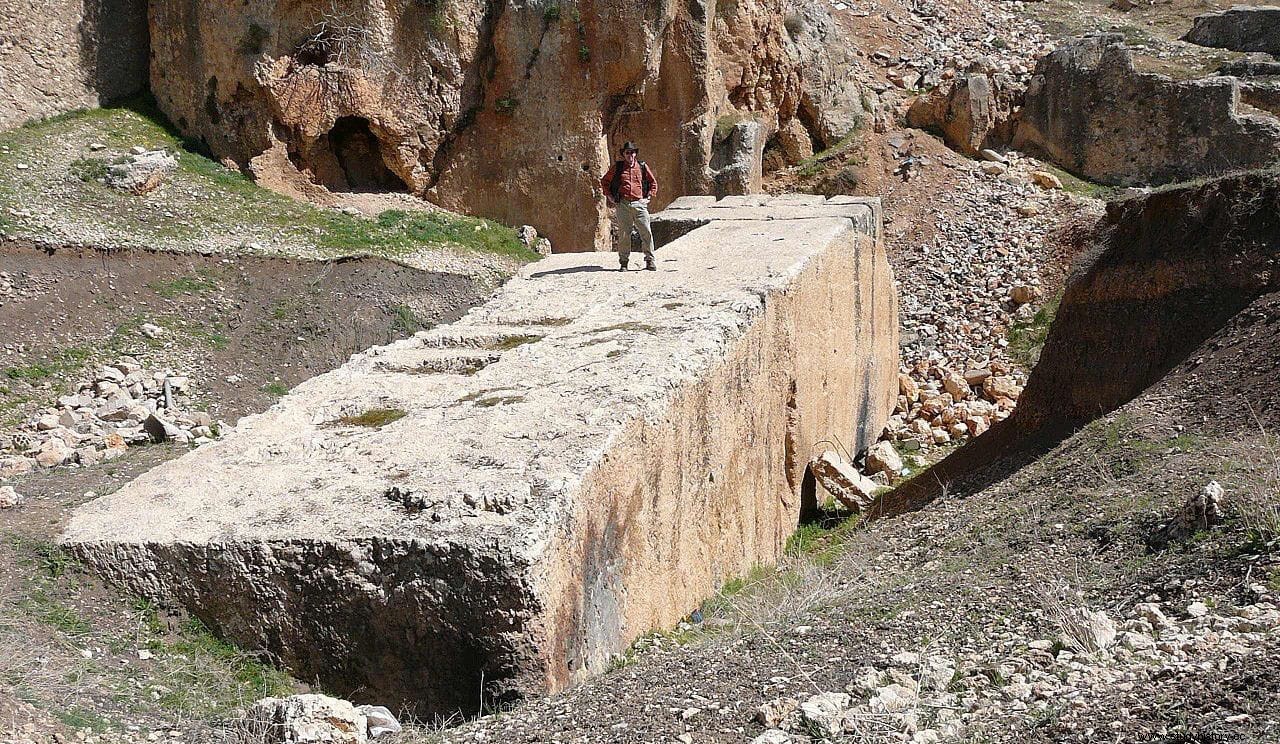A monolith It is a large block of stone in one piece. May be of natural origin , as in the cases of the Australian Ayers Rock or the Spanish Peñón de Ifach, or the result of human labor , carved with a specific purpose and of which the classic examples are the prehistoric menhirs. Now, within this second group they can be subdivided into various modalities more, from the religious (Easter moai) to the decorative (the Egyptian obelisks), through the architectural (the dome of Theodoric Mausoleum in Ravenna), the informative (the Trajan Column) and even, sometimes, of unknown meaning (the spheres of Costa Rica).
Some are bigger than others but if we talk about sizes we have to focus on Lebanon , because one of the largest built by Man in Antiquity was found there. It is the one with the curious name of Stone of the Pregnant Woman , found in a quarry in Baalbek . This, located about 86 kilometers from Beirut, was a city of Canaanite origin where the Phoenicians had built a sanctuary to the god Baal (hence the name); later, during the Greek occupation, the city was renamed Heliopolis , surely because in Hellenistic times Baal was identified with Helios, a solar divinity.

This is how the Romans also knew her, who in the time of Augustus exchanged the cult for that of Jupiter Heliopolitan but keeping the temple. By then it had already undergone a Greek reform, giving it a great platform or courtyard 88 meters long by 48 wide, for which three huge stone blocks were used, weighing about 750 tons each. An even larger room should have been added, but it was finally abandoned in the quarry where it was cut.

That block was intended to continue that trilithon, a dolmen-like structure (two vertical monoliths supporting a third horizontal one as a lintel) that probably surrounded the perimeter of the patio. It is not in the exact place where it was extracted, but rather was moved , although a fairly short stretch (even within the quarry, which is less than a kilometer from the temple), as evidenced by the fact that it is not lying down but in a curious oblique position. Studies carried out in 1996 by a team from the University of Linz (Austria) confirmed previous estimates made by archaeologist Jean-Pierre Adam and concluded that it measures 21.5 meters in length by 4.8 wide, with a square section of 4.2 meters more, and its weight is calculated between 900 and 1,100 tons .
Without a doubt, one of the most curious things about this monolith is its name. The Arabs call itHadjar-el-Qoublé (Stone of the South) but is traditionally known as Stone of the Pregnant Woman Why? It is a good question and, as is often the case with very old denominations, there are several theories about it. The simplest is that it refers to some local belief according to which touching its surface will increase fertility , as it happens in other places. But there is also a legend that tells that a mysterious pregnant woman he offered to move the stone in exchange for child support for her and her future child. The third is the one that assigns the block size to djinns (beings from Semitic mythology, a kind of geniuses that could be male or female) that would be pregnant.

In any case, the Stone of the Pregnant Woman Not alone. In 1990 another somewhat smaller cyclopean block was found (19.5 x 4.4 x 4.5 meters), although it is believed to be heavier (1,242 tons). And a couple of years ago, in 2014, the German Institute of Archeology discovered a third with dimensions that exceed the others, so that it is considered the largest ever built by Man. It measures slightly less in length (19.6 meters), but gains in width (6 meters) and section (5.5 meters), so the weight will be around 1,650 tons . Those parameters are today his glory but then they were his condemnation, since it was considered that they were excessive for a transport with guarantees; in that sense it resembles and differs from the famous Unfinished Obelisk of Luxor, abandoned when cracking.

The Baalbek site continues to be excavated and studied. In 1984 it was inscribed on the list of World Heritage of UNESCO.
